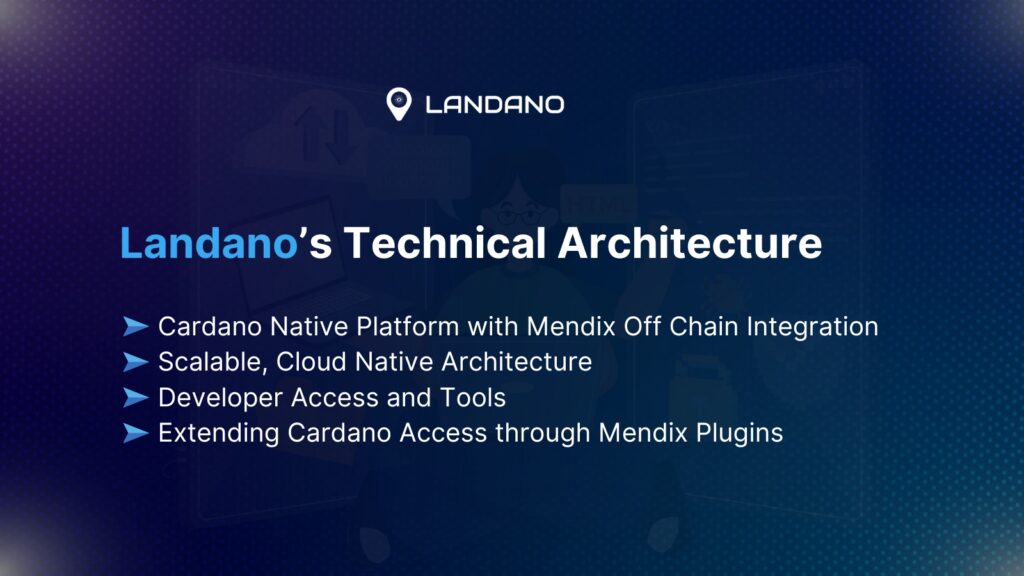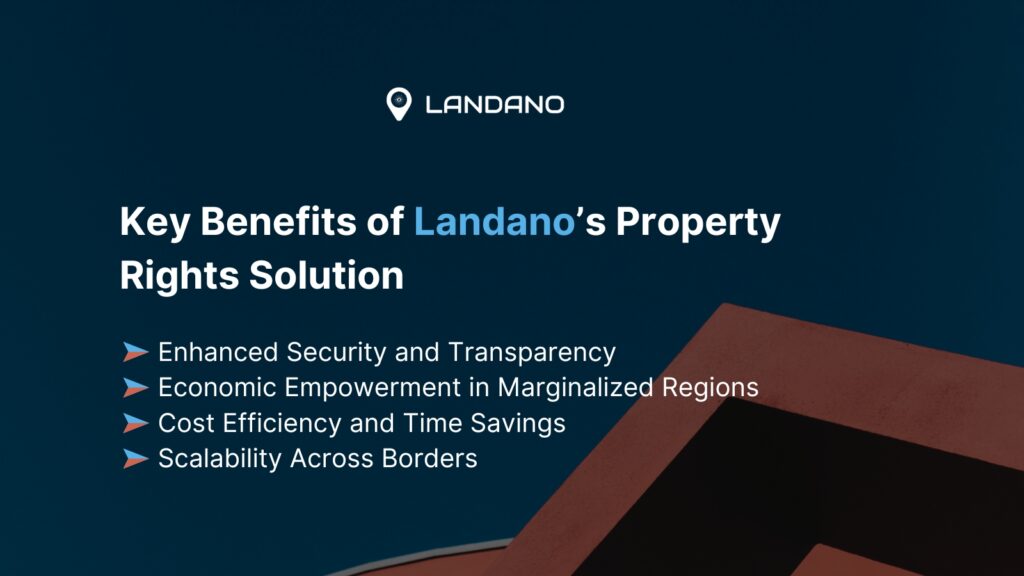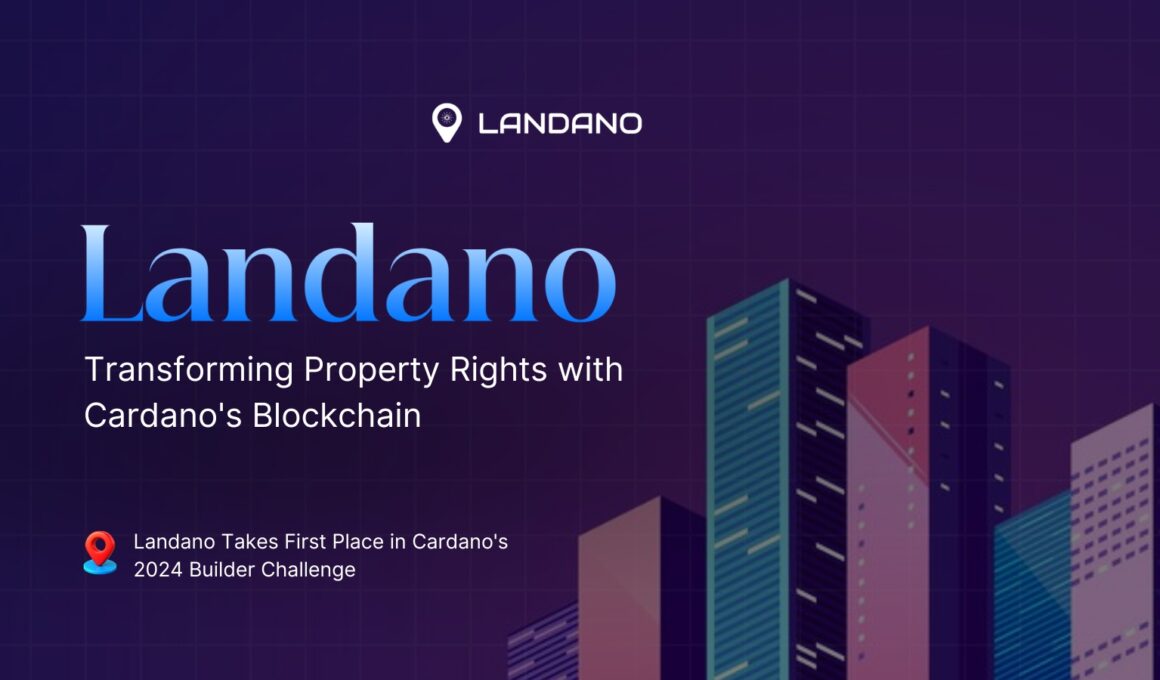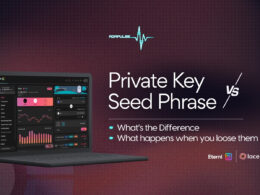Securing property rights has long been a challenge, especially in regions where legal infrastructure and record keeping are underdeveloped. Across the globe, millions of people face the risk of losing access to their land or property due to ambiguous or non existent ownership documentation.
In many areas, land ownership records are either poorly maintained, vulnerable to corruption, or simply inaccessible, resulting in significant legal and financial insecurity. Without verified proof of ownership, individuals are often excluded from essential services like loans, credit, and insurance, limiting economic growth and personal empowerment.
Landano, an innovative project on the Cardano blockchain, tackles these issues head on by creating a decentralized platform for property rights that ensures reliable, immutable records of ownership. By leveraging blockchain technology, Landano provides a transparent and tamper proof solution for land registration, aimed especially at areas where traditional property rights systems fail to protect their citizens.
At the 2024 Cardano Summit, Landano claimed the spotlight, winning first place in the Battle of the Builders. This triumph solidifies Landano as a leader in blockchain innovation, setting a new standard for decentralized property rights solutions on Cardano.
Key Takeaways
- Landano uses blockchain to make property ownership records permanent and tamper proof
- Verified property titles on Landano enable owners to access loans and other financial services
- Landano operates on a decentralized model, giving users control over land transactions and records.
What’s Landano All About?
Landano is a decentralized land registry application built on the Cardano blockchain. This platform focuses on offering secure, verifiable land ownership documentation through blockchain based records. Using Non Fungible Tokens (NFTs) to represent title deeds.
Landano combines blockchain’s transparency with digital notarization to record and verify property rights. This blockchain based approach addresses fundamental issues in property rights management, such as lack of reliable documentation, lack of transparency, and susceptibility to fraud. Landano is actively working on two key projects aimed at modernizing property rights and land management in Ghana and Mozambique.
One of their focus is on revolutionizing land management through digital solutions. This project aims to streamline property registration, making it more efficient and secure. By using digital tools, Landano helps reduce paperwork and minimizes the risk of fraud, ensuring property owners in Ghana can have secure, accessible, and verified land rights.
The Mozambique project is all about simplifying property transactions and securing property rights. Landano aims to make the process of buying, selling, and managing land more transparent and accessible, particularly for local communities. By implementing a more streamlined digital approach, Landano seeks to protect property owners from fraudulent claims and ensure stable land tenure across Mozambique.
How Landano’s Architecture Works

Landano operates directly on the Cardano blockchain, ensuring decentralized and tamper proof land title records. For off chain components, it utilizes Mendix, a low code platform that enables rapid application development. This dual setup allows Landano to keep critical records secure on the blockchain, while Mendix facilitates a flexible, scalable user experience.
Mendix’s cloud native infrastructure makes the off chain components of Landano highly scalable and resilient. Since Mendix supports quick deployment through low code capabilities, it allows Landano’s developers to rapidly create and iterate applications across desktop and mobile. This adaptability is valid for bringing solutions to market faster, which is important in the blockchain space.

Landano’s development team can work directly through the Mendix Developer Portal, which provides all tools for managing, deploying, and scaling applications. Mendix Studio, the core development interface, uses visual drag and drop tools to simplify workflows, data management, and user interfaces, enabling the team to develop a unified code base for multiple platforms.
To extend Cardano’s capabilities to a larger community, Landano has created generic plugins for the Mendix Marketplace. These plugins allow Mendix developers to integrate Cardano NFTs and smart contracts into their own applications, bridging the gap between enterprise solutions and blockchain. This integration opens Cardano’s ecosystem to a broad range of Mendix users, supporting further innovation and cross platform functionality.
How Landano Secures Property Rights

On Landano, each land title is tokenized into a unique NFT that serves as proof of ownership and is permanently recorded on the Cardano blockchain. This immutable storage ensures that land ownership records cannot be altered or forged. In addition, by partnering with local government agencies, Landano strives to synchronize blockchain records with official government land registries, providing a seamless link between traditional land rights and blockchain documentation.
With decentralized storage and verification systems, Landano users can independently manage and transfer property records. The data management system removes the need for intermediaries, thus reducing transaction fees and time delays commonly associated with land transfers. This model enables users to execute land transactions directly, benefiting from a transparent, peer to peer process that reduces reliance on potentially corrupt or inefficient intermediaries.
NFTs on the Cardano blockchain are used to uniquely represent each property title, allowing verifiable proof of ownership with each NFT secured by decentralized identifiers (DIDs) from Atala PRISM. This integration of DIDs provides verified identity data, helping prevent fraud and confirming the ownership history of each property. The NFT model also ensures that each property title can have only one verifiable owner, eliminating the risk of duplicate claims or title disputes.
The Benefits of Landano’s Approach to Property Rights

Blockchain’s inherent transparency offers users confidence that their property rights are secure and publicly verifiable. By decentralizing data, Landano reduces the potential for tampering, fraud, and corruption, creating a trustworthy environment for property transactions.
By enabling secure land ownership, Landano opens new economic opportunities, especially in areas where traditional land rights are weak or missing. Verified property ownership allows people to access financial products such as loans, contributing to economic inclusion and stability.
Traditional land title registration processes can be costly and time consuming. Landano’s blockchain model allows transactions to occur faster and at a lower cost by eliminating intermediaries and allowing direct peer to peer transactions.
Unlike localized land registries, Landano’s blockchain system is scalable and can operate across multiple regions, making it suitable for international adoption. This cross border compatibility allows communities globally to benefit from secure land ownership and economic growth.
The Final Word on Landano’s Approach to Property Rights and Security
Landano on Cardano brings an innovative approach to property rights, providing a decentralized, transparent, and secure system for managing land records. By utilizing NFTs, decentralized identifiers, and community driven governance, Landano tackles key issues in property rights security, offering a promising solution for individuals facing property rights challenges. This technology has the potential to empower people worldwide by giving them access to secure land ownership, fostering financial growth, and promoting social inclusion. As blockchain innovation like Landano evolve, we are likely to see a new era where property rights are both secure and accessible to all.










